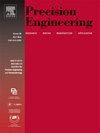Robot stiffness modeling based on the rigid flexible coupling simulation and its application to trajectory planning
IF 3.5
2区 工程技术
Q2 ENGINEERING, MANUFACTURING
Precision Engineering-Journal of the International Societies for Precision Engineering and Nanotechnology
Pub Date : 2024-11-26
DOI:10.1016/j.precisioneng.2024.11.011
引用次数: 0
Abstract
The flexibility of joints has the major influence on the robot stiffness, which makes it limited in the field of precision and ultra-precision machining. How to ensure the end-effector stiffness of the robot has been one significant problem for the above application. To address this challenge, in this work, a rigid-flexible coupling simulation method is proposed for the robot, then based on the simulation, the robotic end-effector stiffness prediction model is established, which can be applied to the robotic trajectory planning to control its end-effector stiffness. In the simulation method, the rigid-flexible simulation model of the robot is established based on the torsional stiffness estimation of each joint and its global decomposition in multiple directions of robotic base coordinate system. During the stiffness modeling, the neural network theory is used to establish a mapping model between robotic pose and end-effector stiffness based on the sample data accumulated by simulations under different poses. In order to show the significance of this work, an application case to the trajectory planning problem is performed. The results analysis, indicates that the proposed algorithm can control the end-effector stiffness not less than the required value during the whole robotic operation.
求助全文
约1分钟内获得全文
求助全文
来源期刊
CiteScore
7.40
自引率
5.60%
发文量
177
审稿时长
46 days
期刊介绍:
Precision Engineering - Journal of the International Societies for Precision Engineering and Nanotechnology is devoted to the multidisciplinary study and practice of high accuracy engineering, metrology, and manufacturing. The journal takes an integrated approach to all subjects related to research, design, manufacture, performance validation, and application of high precision machines, instruments, and components, including fundamental and applied research and development in manufacturing processes, fabrication technology, and advanced measurement science. The scope includes precision-engineered systems and supporting metrology over the full range of length scales, from atom-based nanotechnology and advanced lithographic technology to large-scale systems, including optical and radio telescopes and macrometrology.

 求助内容:
求助内容: 应助结果提醒方式:
应助结果提醒方式:


